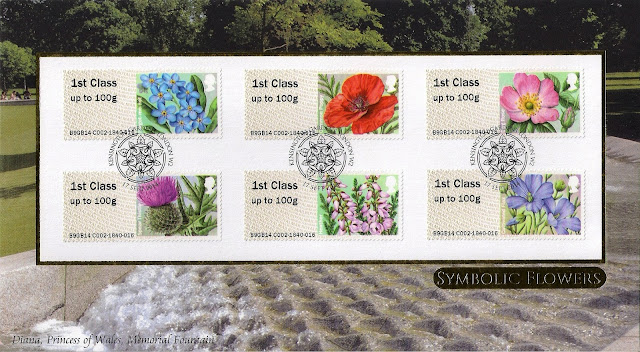Karoo violet (Aptosimum procumbens) - "A densely tufted perennial found mainly in dry areas, especially the Karoo and Namaqualand. The plant is an excellent ground cover and because it is so well-adapted to dry conditions, the deep blue flowers often adorn the bare veld during periods of drought"
Tree pelargonium (Pelargonium cucullatum) - "This attractive indigenous pelargonium with its brightly coloured pinkish-purple flowers, is well-suited to coastal gardens. They occur naturally along the south-western Cape coast, from Gordon's Bay in the west to Gans Bay in the east, with a few isolated populations on the Cape Peninsula"
Black-eyed Suzy (or Susan) (Thunbergia alata) - "Described as a "cheerful, happy-go-lucky indigenous climber", the black-eyed suzy with its small bright flowers and distinctive black "eye", is a very popular garden flower. They occur naturally in the Eastern Cape, KwaZulu-Natal, Mpumalanga and Swaziland".
Botterblom (Gazania krebsiana) - "This sun-loving, fast growing flower occurs in a variety of bright warm colours mainly in the red, orange and yellow range. It is hardy and drought resistant, which makes it a popular garden flower. The botterblom occurs naturally in the Karoo, Namaqualand, KwaZulu-Natal, the Free State and the northern regions of the country, as well as in Lesotho, Swaziland and Botswana"
.
The last in the set (right) is the Blue marguerite (Felicia amelloides) - "This delightful indigenous flower, also known as the blue daisy or bush felicia, bears sky-blue daisy-like flowers with prominent yellow centres. They are happy in almost any setting and the name felicia is aptly derived from the Latin word "felix" meaning "happy". They occur naturally and abundantly from Namaqualand to Caledon in the Northern and Western Cape".
South Africa has 11 official languages and from my small collection I observe that the smaller stamps bear the name South Africa in English together with the indigenous language. I wonder if these are booklet stamps as some have straight edges. The stamp on the left says Afrika Dzongam which is Tsonga, a language I've never heard of but there are the other more familiar ones such as Zulu (iNingizimu Afrika) spoken by 24% of the country and the 'clicking' language Xhosa (uMzantsi Afrika) familiar by being one sung by Miriam Mekeba (singer, civil rights activist and anti apartheid campaigner).
Here is where art and flowers combine with the French artist Daniel Buren who planted 11,000 tulips in the Keukenhof, which might seem a lot but pales into insignificance in comparison to the 7 million flower bulbs planted annually in the park itself (which is open from March to May). Daniel Buren is sometimes referred to as "the stripe guy" with his site specific installations of coloured stripes and has even been arrested in pursuit of his public art.
As this week's Sunday Stamps theme is "Say it With Flowers" I'll mention that in the language of flowers red tulips are a declaration of love, a fact that lets me segue into
symbolic flowers and a set of machine stamps, or 'Post and Go', issued in 2014 as part of the British Flora series. The forget-me-not and poppy signifying remembrance, the rose England's national flower, the thistle for Scotland, the heather for luck (although I remember in the days when gypsies used to sell this plant it was always "lucky white heather") and lastly a floral symbol of northern Ireland, cultivated flax (of importance historically in the linen industry). Wales did not miss out with their national flower, the daffodil, as it had already appeared earlier in 2014 as part of the Spring Flowers set which I showed back in 2014 here
An entry to Sunday Stamps II theme of - Say It With Flowers - for a bunch more see here




4 comments:
I was disappointed to find I had no flower stamps from South Africa. Now I lnow what I am missing.
Somehow or other I have never seen any 'Post and Go' stamps.
Great selection today.
Miriam Makeba - a favourite singer of mine.
I love these S African flowers especially as even the ones with slightly familiar names look quite different from the same flowers we would have at our end of the world!
The design of the stamps from South Africa is wonderful.
Post a Comment